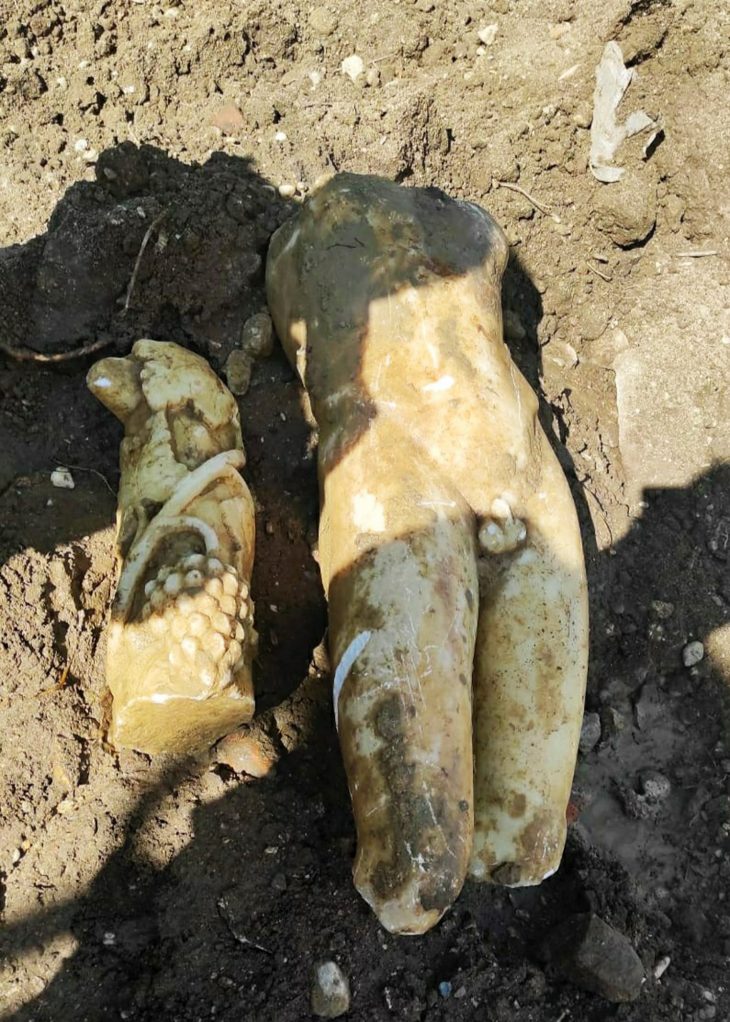Construction workers in Afyon, western Turkey, stumbled upon a historical treasure during routine sewage works. The unearthed artifact is a one-meter tall statue, believed to be a depiction of the Greek god Apollo.
The discovery happened near Sinanpaşa Mound within the Afyonkarahisar Sinanpaşa Municipality. Initial examinations revealed the statue to be broken, missing its head and parts below the knee. While the breaks appear to be old, no fragments were found nearby.
“Based on preliminary findings,” Mehmet Tanır, the Provincial Director of Culture and Tourism, informed a DHA reporter, “the statue is believed to date back to the Roman period and represent the god Apollo.”
Authorities have halted the sewage works in the area pending a decision from the Eskişehir Cultural Heritage Preservation Regional Board Directorate. Tanır added that they have notified the Ministry of Culture and Tourism and the governor’s office about the discovery.

A Glimpse into the Roman Past
The fragmented statue offers a tantalizing glimpse into the region’s Roman past. Apollo, a prominent figure in Greek and Roman mythology, held a multifaceted role. He was associated with archery, music and dance, truth and prophecy, healing and disease, the sun and light, poetry, and more. Son of Zeus, the king of the gods, and Leto, Apollo was also the twin brother of Artemis.
Artistic representations of Apollo typically portray him as a beardless, athletic, and strikingly handsome young man. Interestingly, Apollo also held significance in the Anatolian region, which encompasses parts of modern-day Turkey. Homer’s Iliad depicts him as a supporter of the Trojans, who had a temple dedicated to him within the Pergamum Acropolis.
The discovery of this statue, though incomplete, serves as a reminder of the rich cultural heritage buried beneath Turkish soil. Further investigation and restoration efforts might shed more light on this intriguing find.
